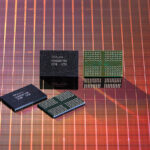ASIA ELECTRONICS INDUSTRYYOUR WINDOW TO SMART MANUFACTURING
Samsung Blazes Trail to MRAM-based In-Memory Computing
In-memory computing is one of key technology enablers to implement AI neural networking computing, as the in-memroy computing chip not only can store, but also parallelly process data on its own silicon footprint
Candidates for the capabilities have been around for years, ranging from RRAM (resistive RAM) to flash to PRAM (phase-change RAM) to MRAM (magnetoresistive RAM)
All these non-volatile memory chip technologies but MRAM have been used to deliver such capabilities – multiply and accumulate operations in analog manners.
Even if MRAM has very good technological attributes such as endurance and large-scale commercialization, however, it remains very challenging to implement that capacity into MRAM, because its resistance value is so low that it consumes too much power.
A research team at Samsung Electronics has broken through the technology barrier, opening the way for MRAM to implement in-memory AI neural computing capabilities.

In the paper submitted to “Nature”, the team proved that MRAM can make it to that application by changing the conventional MRAM architecture.
Led by Dr. Jung Seung Chul, staff researcher with Samsung Advanced Institute of Technology (SAIT) of Samsung Electronics, the team has dramatically re-designed the conventional MRAM cell architecture so that it can use resistance summation for analog multiply and accumulate operations rather than using current.
The academic paper was co-authored by Dr. Jung Seung Chul at SAIT, Dr. Ham Donhee, fellow researcher at SAIT, and Dr. Kim Sang Joon, vice-president of technology at SAIT
The breakthrough allowed the team to design power-thrifty MRAM from scratch. Once the rearchitected MRAM capability embedded into a 28nm CMOS chip for in-memory computing platform, it proved that its two-layer perceptron could classify 10,000 Modified National Institute of Standards and Technology digits with an accuracy of 93.23%.
When the memory cell array is applied to emulate a deeper, 8-layer Visual Geometry Group-8 neural network, the classification accuracy improved 98.86 percent.
When it is used to implement a single layer in a ten-layer neural network to realize face-detection, the accuracy hits 93.4%.
Samsung said that the breakthrough has not only paved the way for commercial availability of MRAM, but also opened up the possibility for it to be used for neuromorphic platform.




